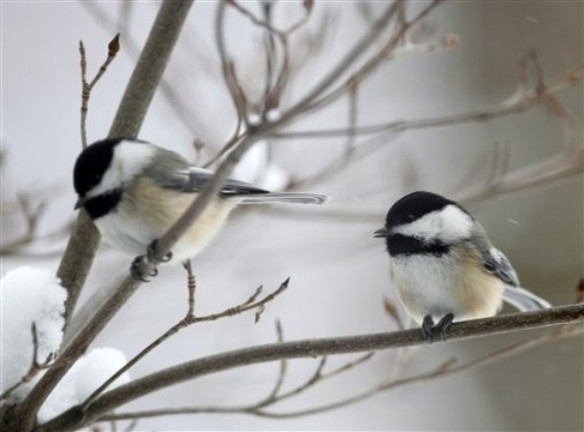This morning I watched a Black-capped Chickadee displace another chickadee at the feeder. Only after the dominant chickadee had gotten its seed and left could the other bird get its turn to eat. Such scenes of dominance and subordination, called the “pecking order,” play out a hundred times each day as the birds jockey for position at the feeders or vie for choice food plots.
In the dominance hierarchy, each bird in the flock is ranked. The ranking is determined by degree of aggressiveness, so all the birds in the flock are subordinate to the most aggressive bird, while the lowest ranking member is subordinate to all the other members, with the rest falling somewhere in between. Typically, males dominate females and adults dominate juveniles. This ranking comes into play during feeding, mate selection, and claiming a territory, and actually reduces conflict because each bird knows its “place” within the flock. In winter, this means that precious energy is not wasted in fighting.
But sometime in early April, the scales will begin to tip in the female’s favor. As hormones kick in and mate selection begins, the rules of the winter flock will no longer apply. Males will pursue and try to impress the females. During courtship, chickadees and many other birds engage in what’s called mate feeding. The male will fly to the female with an insect or seed and the female, crouched with quivering wings like a baby bird, will accept the offering. This act is the equivalent of a “promise” by the male to feed and care for her while she is on the nest caring for their young.
Even the dusting of snow on the ground from last night does not alter the fact that the sun rises a few minutes earlier each day and sets a few minutes later. The lengthening days signal that spring is on its way and in just a few weeks mating season will begin. The male may rule the roost in the winter flock, but come spring, even the pushiest male will be singing a different tune! The female chickadee so rudely ousted by the male at the feeder need only be patient; her day will come.




